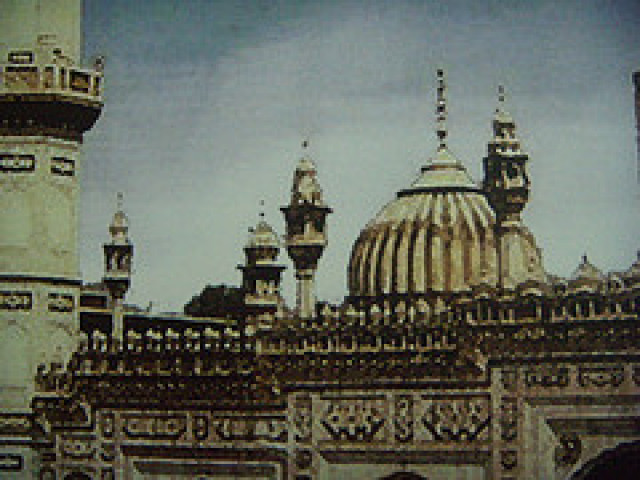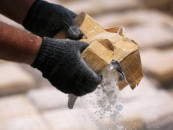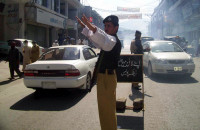Cultural heritage: Shops hold up Sunehri Masjid restoration
38 shops at mosque’s boundary wall need to be vacated for repairs.

Cultural heritage: Shops hold up Sunehri Masjid restoration
Extensive restoration work on Sunehri Masjid, a late Mughal era mosque in old Lahore, will depend largely on negotiations to get rid of shops located along the mosque’s boundary wall.
The restoration project began last September and roughly 40 per cent of the first phase – involving the restoration of the domes, floor, pillars and frescoes – is complete, said officials of the Walled City project. This phase was supposed to be completed in December, but won’t be finished until the end of March.
The real challenge will be the second phase, which will require the vacation of 38 shops around the boundary and then repairs to the wall. The shops have been part of the mosque property since it was constructed, a common arrangement at many of South Asia’s places of worship and shrines, as they provided a source of revenue for the monument’s upkeep.
An archaeologist working at the site said a floral fresco on three doors and the main hall had been damaged as a result of water seeping into the foundations of the outer walls of the mosque. “We cannot detect and fix it until the shop keepers vacate the shops,” he said.
He said part of the reason for the delay in the first phase was that shopkeepers had refused to cooperate. “They complain whenever construction material is brought here and refuse to cooperate. The market surrounding the mosque is too dense and congested and we can’t transport the material to the first floor of the mosque.”
In early October, Walled City project officials wrote to the Auqaf Department requesting it to issue notices for vacation of the shops. Notices were issued to 10 shopkeepers and all were ignored.
The officials said that the shops would be permanently vacated, but Haji Tahir Naveed, president of the Walled City Traders’ Association that represents 52 markets, said this was unlikely. “It is a historic market and the project aims to sustain the most historic sites in the Walled City,” he said.
He said no talks had taken place with the shopkeepers, but the property was owned by the Auqaf Department and it could get the shops vacated temporarily so repairs could take place.
Naveed said that he had negotiated a compensation deal worth Rs140 million for shopkeepers to get 110 shops at the Shahi Hamam and Masjid Wazir Khan Chowk and Bazaar permanently vacated.
Tariq Pehlwan, who runs a crockery shop next to Sunehri Masjid and is president of the traders’ association for Dabbi Bazaar, said he had heard nothing about negotiations for vacating his or any other shops near the mosque.
Awais, another shop owner around the mosque, said he had not heard of any talks to vacate the shops for the mosque’s restoration either.
The Rs5.782million project to restore the mosque is being funded by the US consulate. According to the contractors, about Rs4.5 million will be spent on the structure and Rs2 million on fixing the foundations of the outer wall during the second phase.
Restoration finished
Mud plaster and concurline lime finishing of three of the four minarets surrounding the three golden domes of the mosque is complete, while a damaged pattern on the base of the fourth minaret is being recreated.
An officer on site said the repair of the roof was almost complete. The surface of the three middle domes will be replaced with fresh gold paper, which is the most expensive material required for the repairs.
White marble for the floor at the entrance and special red brick tiles for the terracotta pattern on the floor of the verandahs has been acquired.
Currently, the outside wall is being recreated with mud plaster. It will then be white-washed. Work will then begin on recreating the damaged frescoes, particularly the one in the left compartment of the main mosque building, the officer told The Tribune.
Several smaller domes and dome needles are missing. “People broke and stole the needles, mistaking them for real gold,” he said. He said copper needles would be fixed at the site.
Officials in the Archaeology and Auqaf Departments said that the floors, concurline limewash and frescoes of the 18th Century structure were last repaired more than 20 years ago.
Published in The Express Tribune, January 23rd, 2012.











1729471601-0/image-(8)1729471601-0-208x130.webp)







COMMENTS
Comments are moderated and generally will be posted if they are on-topic and not abusive.
For more information, please see our Comments FAQ